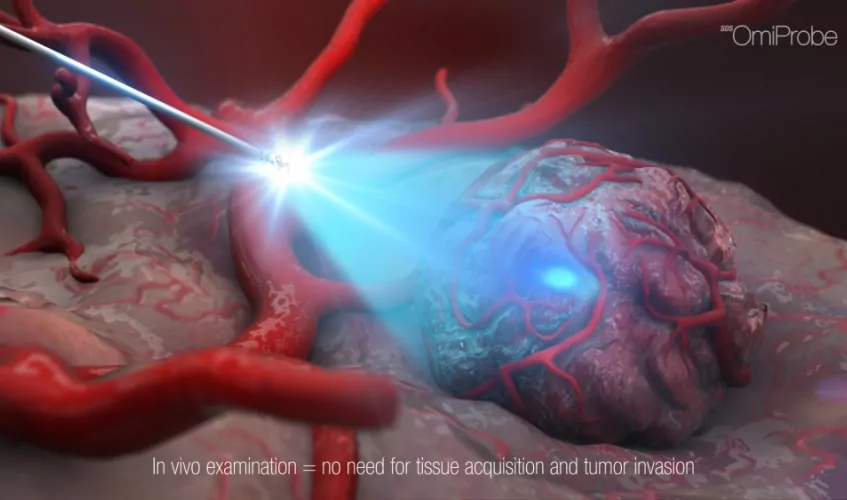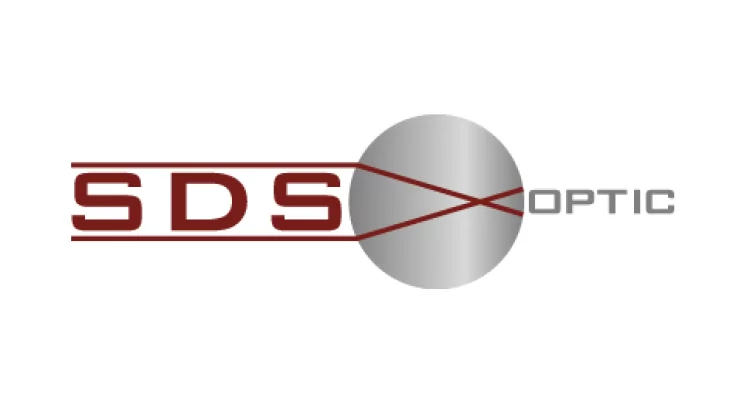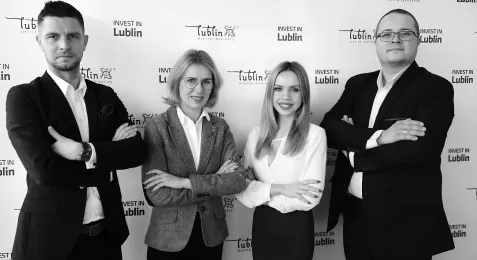Lublin Info Centre
NCRD: SDS Optic works in Lublin on ultramodern diagnostics of breast cancer

Breast cancer is the most common type of cancer found in women around the world. Every year there are about 1.7 million new cases of breast cancer and nearly half a million deaths. An effective and rapid method of detecting the disease could save the lives of many patients. This is the solution that the interdisciplinary SDS Optic team from Lublin is working on.
SDS Optic develops and creates innovative solutions on the borderline of biochemistry, engineering and fibre optic technologies, that can be used in cancer diagnosis and treatment.
Our technology is a breakthrough. We create a tool for direct measurement of the HER2 marker. The use of a microscope will save the patient pain and stress associated with biopsy and waiting for the result – says Marcin Staniszewski, President of the Board of SDS Optic and the originator of the microscope, a graduate of the University of Akron and a collaborator of NASA Laboratory.
Our vision is to make widespread use of our technology to diagnose breast cancer. According to WHO analyses, a fast and effective cancer diagnosis can lead to a reduction in mortality of up to 30%. The problem affects hundreds of thousands of women around the world, who thanks to our technology will receive reliable and fast diagnosis and better chances for curing – adds Magdalena Staniszewska, PhD, Scientific Director of SDS Optic and the originator of the microscope, for many years associated with Harvard Medical School in Boston.
The research and development centre opened on 19 April will allow intensifying the work of SDS Optic on a globally unique technology of in vivo diagnostics, directly in the patient’s body. The laboratory is divided into three areas, each of which will have a qualified team of biologists, chemists, biomedical engineers and physicists. The company is in the process of developing its interdisciplinary team, and scientists who join the group often return from abroad, including the UK and Italy.
Thanks to the support we received from our Investor, we managed to purchase professional and modern laboratory equipment, which includes, among others a chromatograph and ChemicalDoc system for gel imaging and analysis from Bio-Rad, an advanced spectrophotometer, Nikon’s flagship model of fluorescence microscope, and a range of basic equipment and accessories for a modern laboratory, including a professional system for low temperature storage of cells and tissues, incubators, autoclaves, fume cupboards, centrifuges and shakers. Thanks to such professional equipment of our laboratory we will be able to carry out further stages of work and develop our crucial technology on our own. A laboratory, with such equipment and opportunities concerning development, including business from the first days of its operation, is a certain asset for our shareholders – describes Mateusz Sagan, Director of Development and Member of the Supervisory Board of SDS Optic.
SDS Optic is also open to cooperation with scientific circles; it is already implementing joint projects with Lublin universities of medicine and natural sciences, as well as with the Medical University of Wrocław. Recently, the company has also started cooperation with the Warsaw University of Technology and EIT+ in Wrocław.
The SDS Optic team is working on a breakthrough technology based on rapid detection of the test substance in the body, including cancer markers, with particular accuracy, the use of laser beams and the use of innovative components. At the end of the process, the reading is interpreted on the detector using an appropriate conversion algorithm, which gives the level of the tested compound (e.g. HER2 cancer marker) in a numerical form. Due to the high sensitivity of detection, it will not be necessary to measure the markers inside the tumour tissue itself, but in its vicinity.
Thanks to the use of a thin microsound, the device is to perform accurate, very fast and less painful measurement of tumour markers. Currently, SDS Optic focuses on breast cancer, with particular emphasis on the measurement of the HER2 and CCL markers.5 Such diagnosis will allow physicians to start a therapy suitable for the patient much faster, which in turn will translate into the effectiveness of the treatment process.
The development of innovative technology for the production of laser microsomes is possible thanks to the significant support of SDS Optic from public funds. The National Centre for Research and Development co-financed the project under the STRATEGMED and PatentPlus programmes. INNOventure also invested PLN 3 million in the development of SDS Optic, a fund of the Kraków Technology Park and private investors established as part of the initiative of NCBiR – BRIdge Alfa.
Programmes implemented by the National Centre for Research and Development are an excellent example of cooperation between state institutions, scientists and entrepreneurs. In the case of BRIdge Alfa, thanks to the use of private and public capital, as well as the knowledge of professional management teams, we can search for and support projects which today are carried out in intimate academic environments, and tomorrow have a chance to become Polish unicorns – says Prof. Aleksander Nawrat, Deputy Director of the National Centre for Research and Development.
SDS Optic is also one of the largest beneficiaries of the SME Facility under the “Horizon 2020” programme of the European Commission and a member of the “Lublin Medicine Cluster”.
Source of information: NCRD






